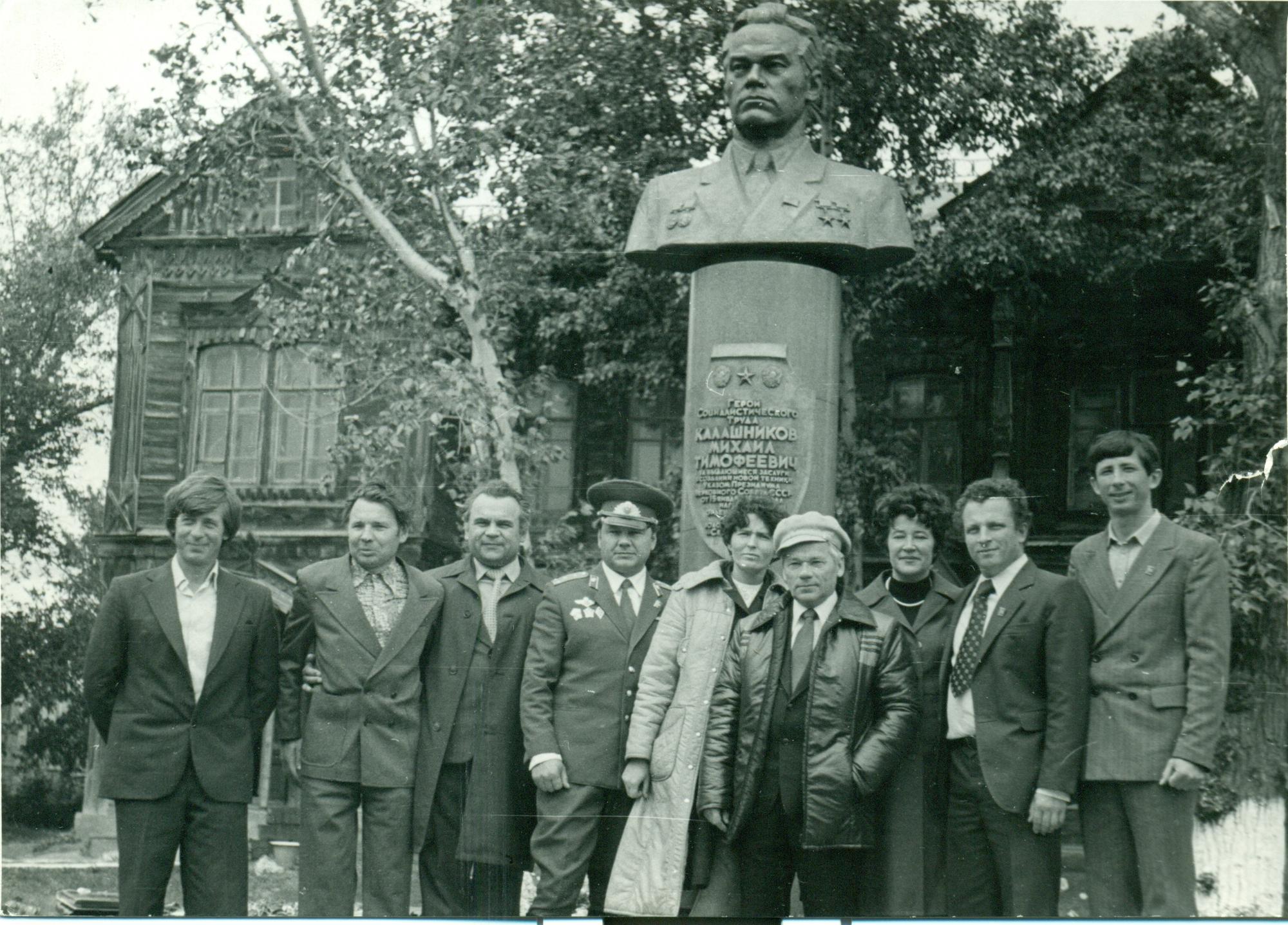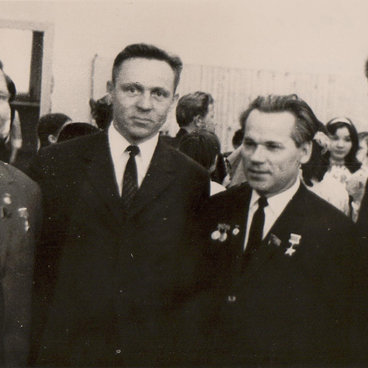Despite having much work in the capital, Mikhail Kalashnikov did not forget his homeland and once in a while travelled to the village of Kurya. There, he did not just meet with his numerous relatives: he travelled a lot around the Altai Krai and met with local people: collective farm workers, schoolchildren, military men, cultural workers and scientists. But there were two trips that the famous engineer remembered as the most interesting and memorable ones. The first one took place in 1980 when Kalashnikov’s portrait sculpture was inaugurated in the village of Kurya, and the second one, in 2007, when he came for the celebration of the 70 years of the Altai Krai.
In his memories, Mikhail Timofeyevich told about his conversation with Anatoly Ivanovich Beldyushkin, who worked at the portrait sculpture in his Moscow studio. When it came to sculpting the brow ridges, Kalashnikov protested and jocularly wondered why the sculptor was “making his eyebrows look like Brezhnev”s”. The sculptor answered that such prominent brows are a sign of constant mental activity and effort. Smiling, Kalashnikov asked to free him of that effort.
Later, he travelled to his homeland, the village of Kurya, for the inauguration of his portrait sculpture that was set up in the central square of the village, not far from the local library. Kalashnikov’s fellow countrymen and fellow villagers who were present at the ceremony asked him a lot of questions about his work and about how he twice became Hero of the Soviet Union. But he was not allowed to talk about that: the engineering work required secrecy and silence, and that is why local newspapers tried not to publish photos of Mikhail Timofeyevich.
Mikhail Timofeyevich used to talk a lot about his close relatives. In his large family (he was the 17th child of 19), only eight children survived, and only his niece Nadezhda still lived in Kurya. Kalashnikov’s elder sisters, Anna Chuprynina and Agafia Ovchinnikova, died long ago and were buried in the Kurya district. During his last trip in 2007, Mikhail Kalashnikov was accompanied by his daughter Elena. The Kalashnikovs came to the portrait sculpture and met with their fellow countrymen. Local people told him that a new popular belief had appeared in Kurya: if newlyweds come to the bronze “Uncle Misha” and ask his blessing, their marriage will be happy and durable like free machining steel.
In his memories, Mikhail Timofeyevich told about his conversation with Anatoly Ivanovich Beldyushkin, who worked at the portrait sculpture in his Moscow studio. When it came to sculpting the brow ridges, Kalashnikov protested and jocularly wondered why the sculptor was “making his eyebrows look like Brezhnev”s”. The sculptor answered that such prominent brows are a sign of constant mental activity and effort. Smiling, Kalashnikov asked to free him of that effort.
Later, he travelled to his homeland, the village of Kurya, for the inauguration of his portrait sculpture that was set up in the central square of the village, not far from the local library. Kalashnikov’s fellow countrymen and fellow villagers who were present at the ceremony asked him a lot of questions about his work and about how he twice became Hero of the Soviet Union. But he was not allowed to talk about that: the engineering work required secrecy and silence, and that is why local newspapers tried not to publish photos of Mikhail Timofeyevich.
Mikhail Timofeyevich used to talk a lot about his close relatives. In his large family (he was the 17th child of 19), only eight children survived, and only his niece Nadezhda still lived in Kurya. Kalashnikov’s elder sisters, Anna Chuprynina and Agafia Ovchinnikova, died long ago and were buried in the Kurya district. During his last trip in 2007, Mikhail Kalashnikov was accompanied by his daughter Elena. The Kalashnikovs came to the portrait sculpture and met with their fellow countrymen. Local people told him that a new popular belief had appeared in Kurya: if newlyweds come to the bronze “Uncle Misha” and ask his blessing, their marriage will be happy and durable like free machining steel.



